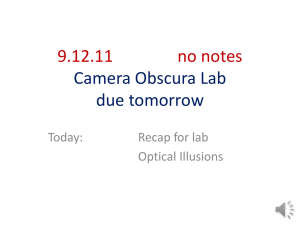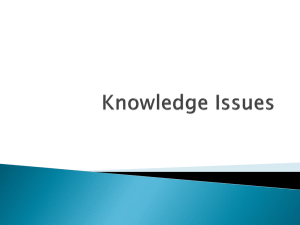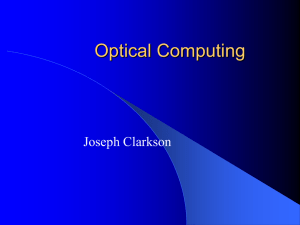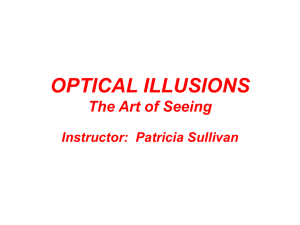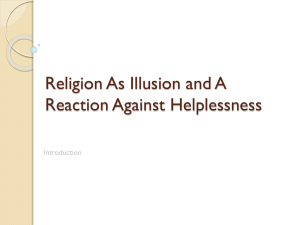Senses Observation Lab - Ms. Lariviere`s Grade 7 Life Science
advertisement
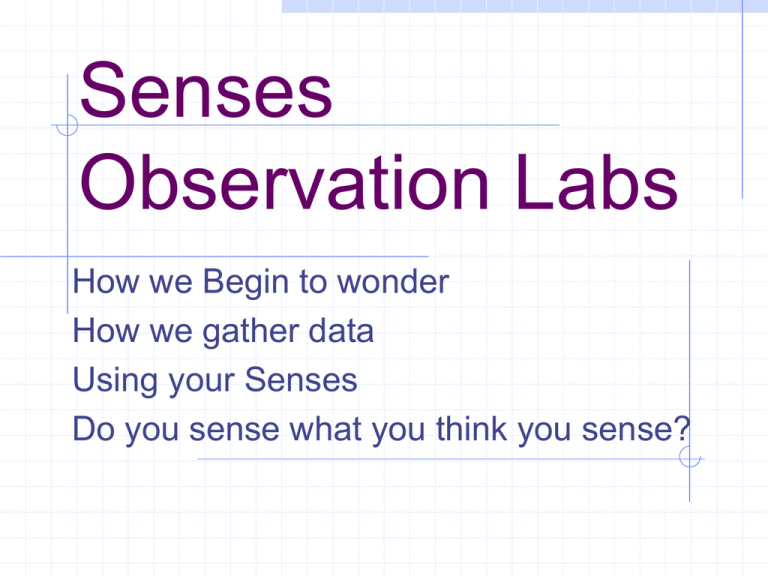
Senses Observation Labs How we Begin to wonder How we gather data Using your Senses Do you sense what you think you sense? Your Senses 1 Sight for many people, sight is their primary way of learning things! There are 2 types of receptors, Rods and Cones Rods are more sensitive - monochromatic and used at night Cones sense colors, and are packed in the center of the visual field for best clarity. Cones are Red – Green – Blue detectors Your Senses 2 Hearing You get a lot of information in school via hearing! Pressure waves funnel into your ear, vibrate the eardrum and 3 small bones, and are transferred to the Cochlea. This vibrates in different parts depending on the frequency and the information is sent to the brain. Loud noises can damage the sensory cells in the cochlea. The typical frequency range is 20Hz – 20,000 Hz when young. You lose the high frequencies as you age. Your Senses 3 Tasting Perhaps the weakest of the senses You actually only have 4 types of taste sensors – Sweet, Sour, Salty, Bitter! From those 4 tastes (with your sense of smell helping) – you experience your food. There are proposals for 1 or 2 other tastes – umami (glutamate – MSG) and “fat” Your Senses 4 Feeling / Touch Like Taste and Vision, there are only 4 touch sensations or receptor cells. Pain - Pressure - Hot - Cold Touch receptors are not evenly placed on the body – there are more in your fingers, less on your elbow! Your Senses 5 Smelling “stink” is a rather vague term There are more than 3000 different smells you can detect. The nose contains receptors for different molecule shapes. Smell is the “oldest” sense. And is more directly wired into the brain than others. Your Senses 6??? ESP? Extra Sensory Perception – Mind Reading, Detecting Auras, Clairvoyance, and more. People claim to have these powers, but they haven’t been proven* in experiments. *the hypothesis has not been supported Observations vs Inference Observations are those sensations we receive via our 5 senses. Inferences are what we think we sense, based on the sensations we have received and past experience. Observations vs. Inference 2 Example 1 - you hear a whistling sound outside (observation) and say it is a bird (inference). Of course, it may have been a tape of a bird! Or a Space Alien! Example 2 - you see an unusual light in the sky (observation) and say it is an Alien Spacecraft (Inference) 2 “true” UFO stories Observation Lab 1 The inside of an eye The Retina Why you get “red- eye” in flash pictures. Optic Nerve The Blind Spot Blood Vessels Observation Lab1 Blind Spot Hole in the Hand – Floating Sausage(s) Optical Illusions Straight Lines? Afterimages Motion / Cube or ? Color Blindness Write up your observations in your noteboook and Show it to me. Observation Lab1 Blind Spot An easy lab, but a little spooky – Get out a piece of paper, and make a small + on it, about 10 cm away (4 inches) put a dot. The dot can be about 2-4mm across Hold the paper with the dot on the right – close your left eye – stare at the cross. Slowly bring the paper close – you will notice the dot disappears!!! Flip the paper over, and do it with your Right eye closed. Observation Lab1 Hole in the Hand Roll up a tube of paper – hold it in your right hand, and put it up to your right eye. Hold your left hand next to the middle of the tube! It looks like you are looking through your hand Floating Sausage Put two fingers pointing at each other in front of your eyes. See the “sausage” floating between them. Observation Lab1 Optical Illusions 1 Observation Lab1 Optical Illusion 2 Observation Lab1 Optical Illusions 3 Observation Lab1 Optical Illusion 4 Observation Lab1 Optical Illusion 5 Observation Lab1 Optical Illusion 5.1 Observation Lab1 Optical Illusion 6 Observation Lab1 Optical Illusion 6.1 Observation Lab1 Optical Illusion 7 Observation Lab1 Optical Illusion 7.1 Observation Lab1 Optical Illusion 7.2 Observation Lab1 Optical Illusion 8 Observation Lab1 Optical Illusion 9 Observation Lab1 Optical Illusion 10 Observation Lab1 Optical Illusion 10.1 Observation Lab1 Optical Illusion 11 Observation Lab 2 Listening Like some of the visual illusions, there are also Auditory ones. Here is the ever descending tone. B A http://asa.aip.org/sound/cd/demo27b.au Observation Lab 2.1 Listening This is the most difficult lab this year you have to be silent for 20 minutes, and write down everything you hear. Please do not deliberately make noise! Start when I say so: Stop when I say so. Observation Lab 2.2 Look at your listing. How many of the things you wrote down are true Observations (A description of What you sensed) -and how many were Inferences (What you think caused the sound) Write a Summary comment and Conclusion and turn it in. Observation Lab 3 - ec Tasting - a Map of the Tongue You only taste 4 basic taste sensations! Sweet Salty Sour Bitter Each taste has it’s special place on the tongue. Using the taste samples – make a map! Observation Lab 4 - ec Feeling – Touch How Close are the receptor cells? With two probes – find out how far away they must be before you can tell there are two! Try the fingers, arm, elbow! With one probe, try and find an example of each type of cell. Observation Lab 5 - ec Smell This lab is a homework assignment - you will need the help of a brother or sister (or mom or dad) Slice a wedge of onion and a wedge of apple. Don’t let anyone see you. Blindfold your subject Hold the onion under their nose and have them bite the apple. Ask them what they think they ate. Observation Lab 6 ESP If you want to do this lab at home, or… Take a deck of cards (beware of contraband) To test “telepathy” you look at a card, thinking of its suit (Hearts, Clubs, Diamonds, Spades). Your friend has to tell you what suit it is. For each correct answer – put the card on a “correct” pile. For each wrong answer – the “wrong” pile. Random guessing suggests about 13 cards in the correct pile, after going through the deck. Keep records!!! Questions? Disclaimer Aloha I put together these power points for use in my science classes. You may use them in your classes. Some images are public domain, some are used under the fair-use provisions of the copyright law, some are mine. Copyright is retained by the owners! Ted Brattstrom
